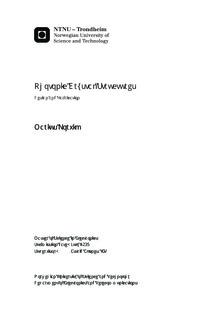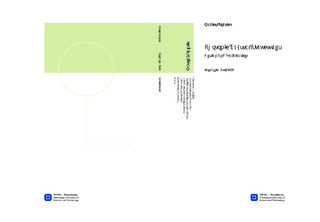| dc.description.abstract | This thesis is devoted to the study of photonic crystal (PhC) design and fabrication. The design of a trigonal PhC waveguide is evaluated using finite element method (FEM) simulation software, and some considerations regarding non-ideal effects are discussed. The PhC of choice is a trigonal lattice PhC, with lattice constant and hole radius set to a = 503.26 nm and 0.4a, respectively. Hole roughness is found to induce multiple scattering within the PhC waveguides, causing increased reflection coefficients. At high levels of roughness, a breakdown of the photonic bandgap is observed, causing light to leak out of the PhC structures.The fabrication routines for the trigonal lattice PhC is researched, using electron beam lithography and inductively coupled plasma reactive ion etching. A silicon on insulator (SOI) wafer is created by plasma enhanced chemical vapor deposition of hydrogenated silicon dioxide and amorphous silicon (a-Si), but the resulting a-Si layer is found to be very rough. As this would induce optical losses, the fabrication is performed on single crystalline silicon wafers, but the results should be readily transferable to SOI wafers with a single crystalline top Si layer. The etched PhC structures are characterized by scanning electron microscope (SEM) inspection. Future work should seek to fabricate a PhC waveguide in SOI, using the routines outlined in this thesis, and measuring the transmission loss.Two etch chemistries are investigated in this work. The first is based on sulfur hexafluoride (SF6) and fluoroform (CHF3), and the second is based on hydrogen bromide (HBr). The SF6/CHF3 etch recipe is found to provide near vertical etch profiles, while the HBr etch recipe has slightly positive profiles due to its reactive chemistry. Suggestions of improving the SF6/CHF3 recipe are outlined, and it is theorized that optimization will yield an etch recipe which is highly capable of defining PhC structures in Si.A simple method of estimating the performance of fabricated structures is outlined, using enhanced SEM images to define the structures in FEM software. The results are limited by artifacts arising from image processing of the SEM images, but this should be easily mitigated given enough time. | nb_NO |

